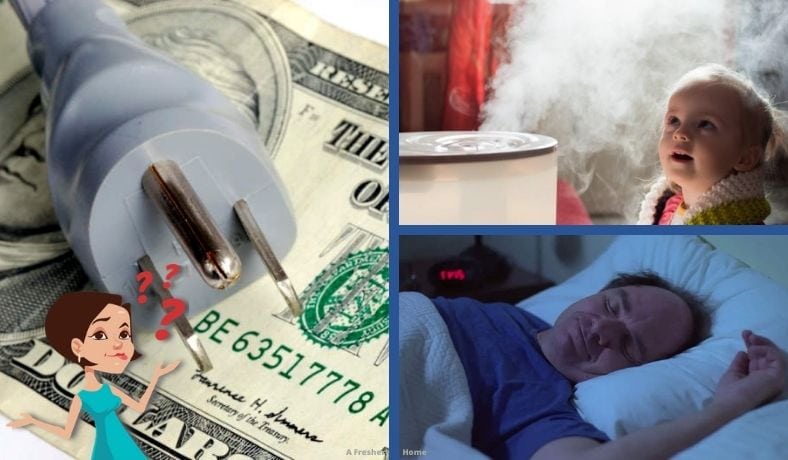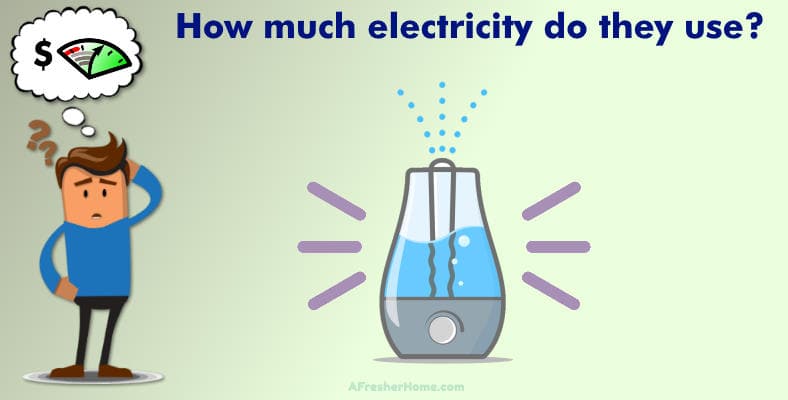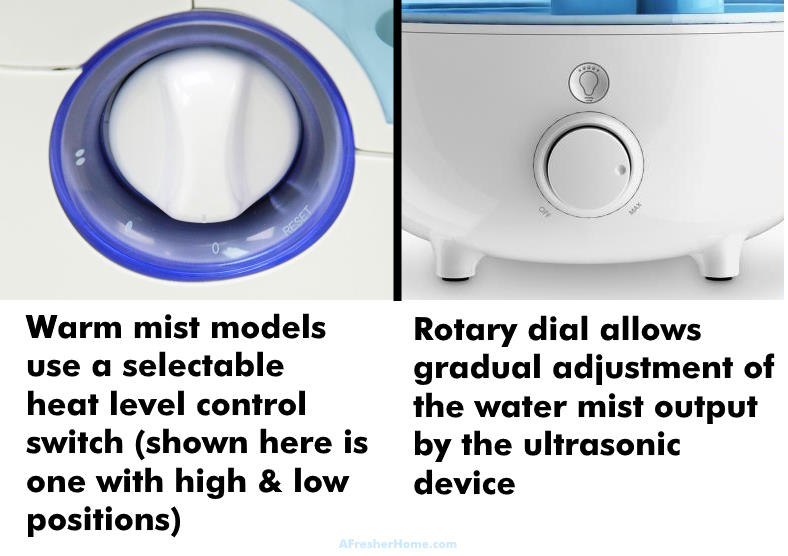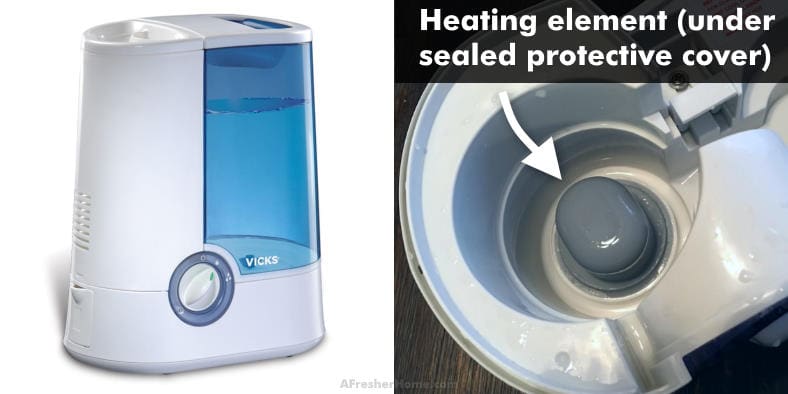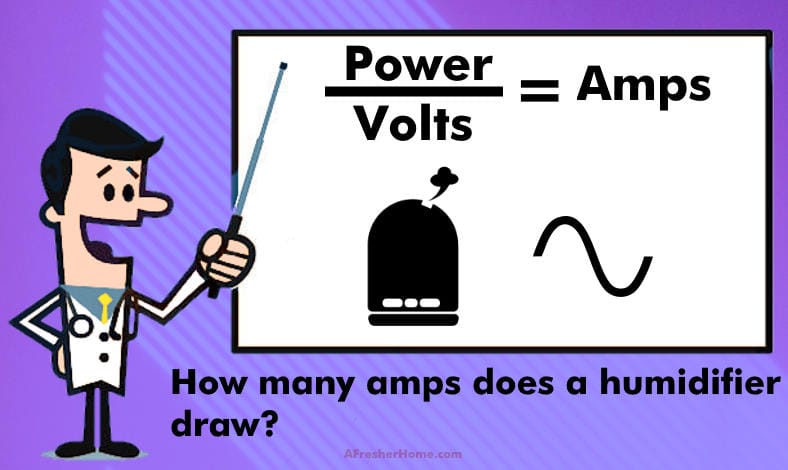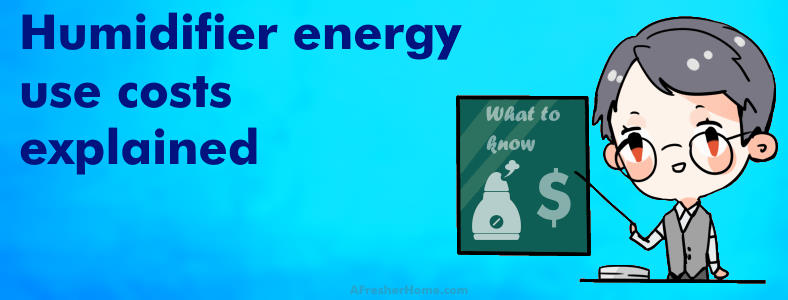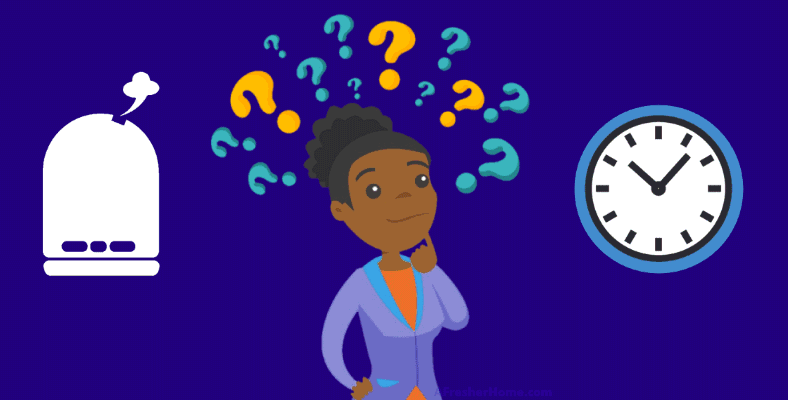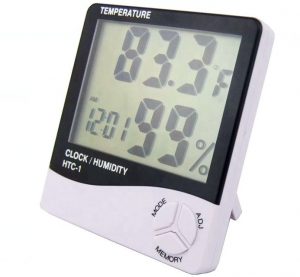I love my humidifiers (and I bet you do, too), but have you ever wondered about how much they’re costing you to use? Especially for overnight while you sleep or all day when you’re not feeling well.
Just exactly how much does it cost to run a humidifier? That’s what I’m here to answer!
In this article I’ll share:
- Humidifier energy use in watts, amps, and more.
- How much they cost to use overnight, daily, for a week/month, and more.
- Warm mist vs cool mist humidifier differences.
Contents
How much electricity does a humidifier use?
The amount of electricity used by humidifiers depends on two things:
- What type of humidifier it is: warm mist or cool mist.
- The output level it’s set to.
Long story short, warm mist models use quite a bit more electricity than cool mist models. I’ll explain exactly what I mean here and give you a good idea of what to expect from yours.
Warm mist humidifiers work differently than cool mist humidifiers and also have a different type of control. Cool mist models (usually) use an adjustable mist control that allows a range of adjustment while warm mist models have just a few selectable switch positions.
How much power does a humidifier use? (Power use tables & notes)
These tables contain typical power use measurements for both cool mist and warm mist humidifiers. In this example, I’ll assume the warm mist model has 2 settings (this is pretty common). Since they operate a bit differently I’ve separated them into two tables to keep it simple.
1. How much electricity does a warm mist humidifier use?
Warm mist models use a lot more electricity than cool mist humidifiers (about 10 times as much) because they use an electric heating element that creates warm steam.
This is similar to how old electric coffee kettles worked: electricity is applied to the heating element, it reaches full operating temperature after a short while, and then water is heated enough to make steam and rise, filling the room’s air.
| Warm mist setting | Typical Power Use |
|---|---|
| Low | 125W |
| High | 260W |
While 260 watts or so (on average) seems like a lot of energy use, compared to other appliances such as air fryers, heaters, and even hair dryers which can use 1,000 to 1,500 watts, it’s relatively small. The advantage of a warm mist humidifier over a cool mist one is that warm mist is more helpful for some conditions, especially sinus cold and congestion.
Cool mist models don’t offer the slightly warm moisture that these models do that can help open sinuses or other passageways and even help you recover more quickly. They can also use drop-in liquids or pads with menthol for additional soothing relief.
2. How much electricity does a cool mist humidifier use?
Cool mist humidifiers use less electricity than warm mist models. Quite a bit less! This is because they use a device sometimes called an ultrasonic transducer which is basically a high-frequency device (usually a piezoelectric component) that vibrates its surface at a very high frequency.
It doesn’t require the same amount of electricity to do so as the heating element used in a warm mist model. Not only are they energy efficient, but most are also extremely quiet; that is, while both warm and cool mist humidifiers are quiet, cool mist models don’t “gurgle” or “bubble up” water and are super quiet during use.
They can also be used year-round since they don’t add heat to your room.
| Cool mist output (dial setting) | Typical power use |
|---|---|
| Low level | 5w |
| Medium level | 15w |
| High level (maximum) | 24w |
As you can see, even on the highest setting a typical cool mist model uses about 1/10th the electricity of a warm mist one.
How many amps does my humidifier pull?
We can estimate the electrical current, in amps, that a humidifier draws since we know its typical power use. You can always check your model to verify the watts used and adjust accordingly, but the numbers below should be fairly close for most products.
In the table here, I’ll provide 110V (for USA users and some other countries) and 220V for our friends in other countries.
Humidifier amperage use table
| Mist setting | Warm mist amps (110V, 220V) | Cool mist amps (110V, 220V) |
|---|---|---|
| Low | 1.14A, 0.57A | 0.14A, 0.07A |
| Medium/mid-point | N/A | 0.14A, 0.07A |
| High/maximum | 2.36A, 1.18A | 0.22A, 0.11A |
As you can see, the amperage for a cool mist unit is about 1/10th that of a warm mist humidifier – just like we’d expect based on the power ratings.
How much does it cost to run a humidifier?
Do dehumidifiers cost a lot to run?
Ready for some great news? Using a humidifier – including every night, overnight, or every day doesn’t cost much. They’re affordable to own and use as much as you like (especially cool mist models).
I’ll explain what I mean here. We’re in luck as it’s not difficult to estimate how much electricity a humidifier uses and what your power company may charge for it.
How can I figure out humidifier electricity use costs?
To do that we need to come up with some basic estimated numbers. We also need to know approximately much our electrical power company charges for the electricity they supply to a home. Power companies bill the power you use with a rate called cents per KiloWatt-hour. I’ll use Kilowatt-hours to do some simple math and show you the energy rates for humidifiers.
Let’s take an example knowing that most people use a humidifier for a large number of hours each day when they need dry air relief. Let’s use the following numbers:
- Mist setting & time: Example #1: 9 hours on low (overnight) on high. Ex. #2: 9 hours overnight and 15 hours during the day for 24 hours/day (high setting).
- 30 days in our example month.
- Warm mist power use: 260 watts; cool mist power use: 24 watts.
- Georgia, USA average electricity cost: $0.1101 per Kilowatt-hour (kWh).
Based on this, here’s a table showing how much it costs:
Humidifier electricity cost table
| Time used | Warm mist power cost | Cool mist power cost |
|---|---|---|
| Over night (9 hrs) | $.26 | $.024 |
| 24 hours | $.69 | $.063 |
| 9 hrs/night – 1 week | $1.80 | $.17 |
| 9 hrs/night – 1 month | $7.73 | $.71 |
| 24 hrs/day – 1 week | $4.81 | $.44 |
| 24 hrs/day – 1 month | $20.61 | $1.90 |
| 24 hrs/day – 1 year | $250.76 | $23.15 |
As you can see, running a warm mist humidifier 24/7 isn’t exactly “expensive” compared to some other things, but the cost adds up over the long term. But they’re pretty inexpensive when used overnight for some time period of less than 24 hours.
If you’re budget-minded a cool mist humidifier is more cost-effective with its low energy cost. I personally recommend cool mist if you’re using it very often to keep your power bill lower.
How many hours a day should you run a humidifier?
The basic answer is that you should use a humidifier as much as you need to feel comfortable – as long as the humidity doesn’t go above a comfortable level. Generally speaking a comfortable humidity range for most people is about 40 to 55% or so.
A good rule of thumb would be to use your humidifier for at least 4 to 5 hours or so depending on the room size (larger rooms take more time). 8 hours is also a great rule of thumb.
At 60% and above the body typically begins to feel warm, start perspiring, and the air can feel “muggy.” A great way to know when to stop using your humidifier is by using an inexpensive, but super-helpful, digital humidity gauge.
A digital humidity gauge as seen here can be found for under $10. They’re extremely helpful as they show the temperature and humidity in a room to help you track the humidity for the best results.
Wintertime and colds & sickness
Warm mist purifiers are very helpful for opening congested sinuses and restoring moisture to a scratchy, dry throat or nose. During the winter time, the humidity often drops several (to as low as 15-20%!) and sickness is very common.
If you’re not feeling well, feel free to use your humidifier overnight while sleeping. It’s a fact that humidifiers help you to recover more quickly if you have a cold or the flu in addition to helping your sleep better.
Is it good to sleep with a humidifier every night?
The quick answer is that sleeping with a humidifier can be great for your health, when you’re sick, and provide better comfort and rest when humidity is needed. However, you don’t want the humidity to go over a comfortable level. Not to worry – I’ll explain what I mean by that.
Bedroom humidifier benefits
There are some great reasons why using a humidifier while sleeping:
- Colds, flu, and congestion: a humidifier can help reduce how bad you feel and can even help you get well sooner. When you’re sick, sinuses and other parts of your body can become uncomfortably dry. A humidifier can help replace the dryness and let you sleep better, too.
- Skin problems: people who suffer from dry, itchy skin may find using a humidifier overnight offers them relief and lets them rest.
- Respiratory problems, allergies, and general discomfort: it’s a fact that allergy symptoms can be reduced when the humidity is at a healthy level. This also helps people with some respiratory problems as their breathing passageways are moist and less difficult to breathe through.
- Less likelihood of waking up with problems: if the air is comfortable and has sufficient moisture you’re less likely to wake up feeling poor or even potentially getting sick due to dry air. Dry air causes dry mucous membranes in the body and makes it easier for germs to affect you.
Is sleeping with a humidifier bad?
No, it’s never really “bad” but you don’t want to leave a humidifier running on the high setting all night if it’s going to bring the humidity above a good level (around 60% and below is usually comfortable). You could end up having problems sleeping (even sweating!) and then won’t get the rest you need.
Once the humidity is too high it’s hard to bring it back down aside from opening a window in winter or using your air conditioner.
Is it fine to close the door with a humidifier running all night?
Yes! Humidifiers work better in a closed room since there’s less air volume they have to work against. Larger spaces require even more moisture, meaning it takes a proportionately longer time according to how large the space is. The smaller the air space (for example, with a closed room) the faster it can work.
If you need to raise the humidity in larger spaces you should consider using more than one or use a larger, more powerful model.
